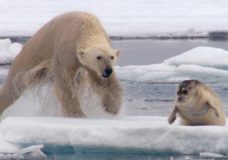The Lost Forests of New England – Ray Asselin (2018)
The documentary by filmmaker Ray Asselin highlights many values of oldgrowth forests and features forest ecologists including David Foster of Harvard Forest, Peter Dunwiddie of University of Washington, Tony D’Amato of University of Vermont, Tom Wessels of Antioch University of New England, David Orwig and Neil Pederson of Harvard Forest. Among these people Robert Leverett is a nature enthusiast who has spearheaded local expeditions to find the last bits of old-growth patches and gain recognition. Today old-growth forests occupy a […]

















Recent Comments